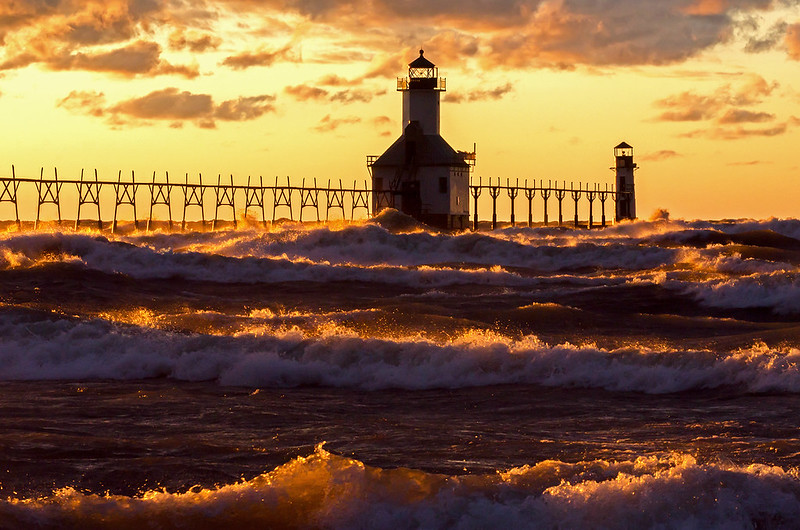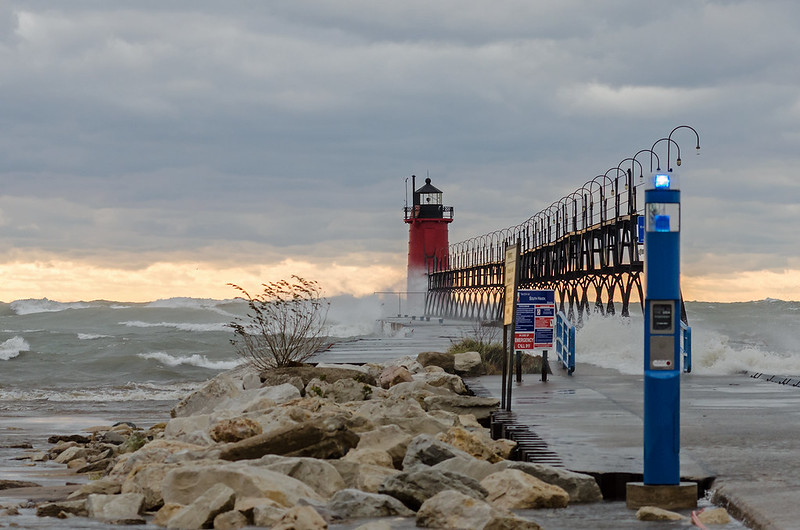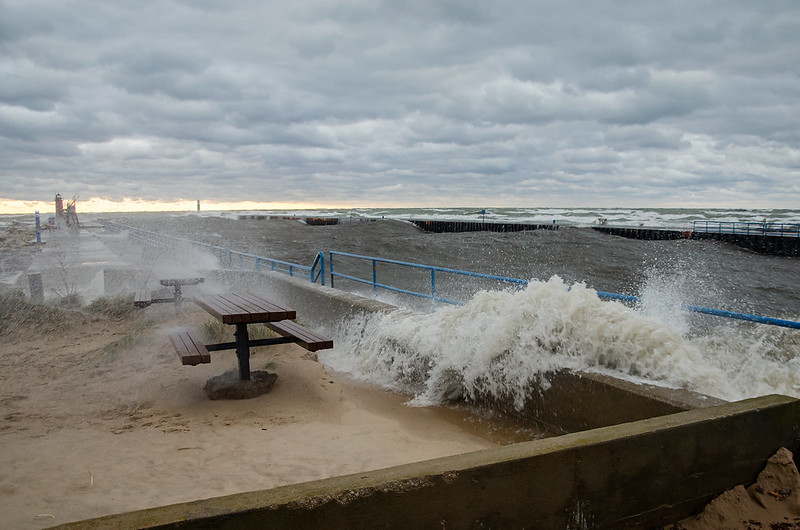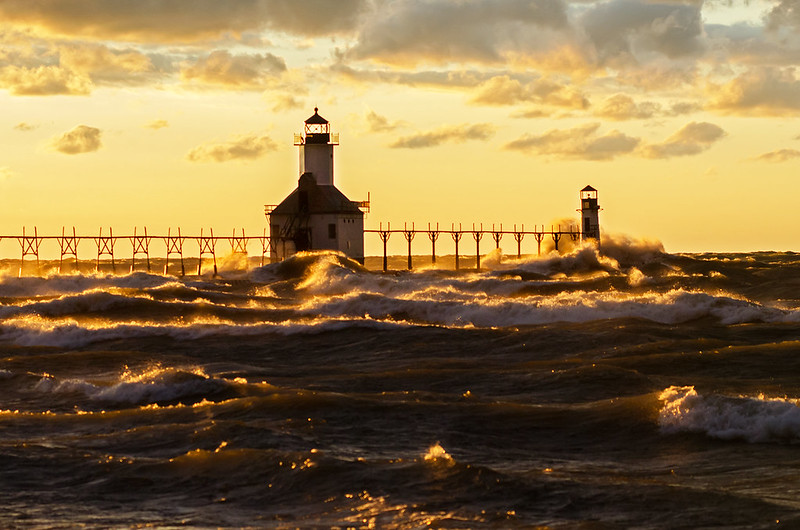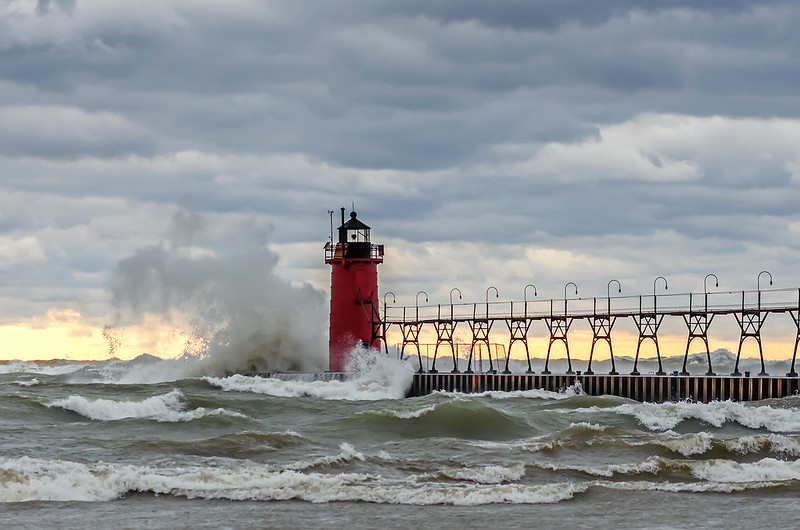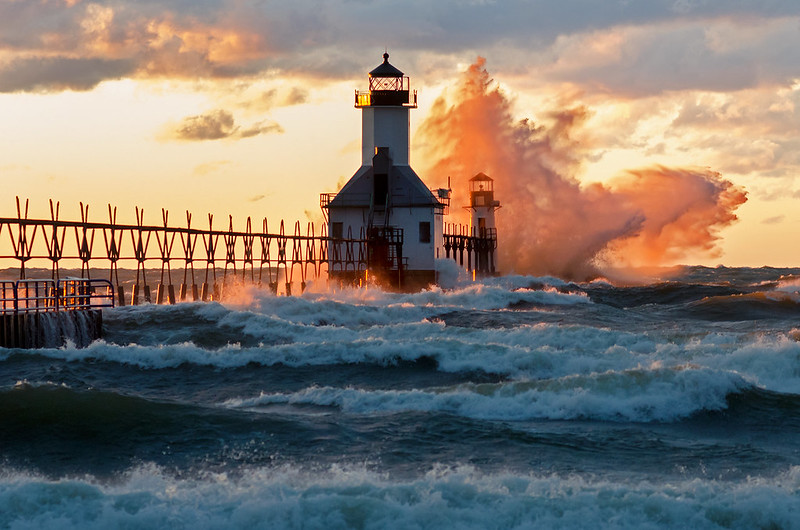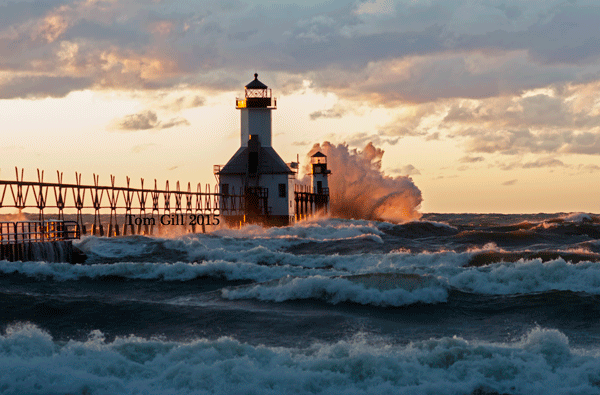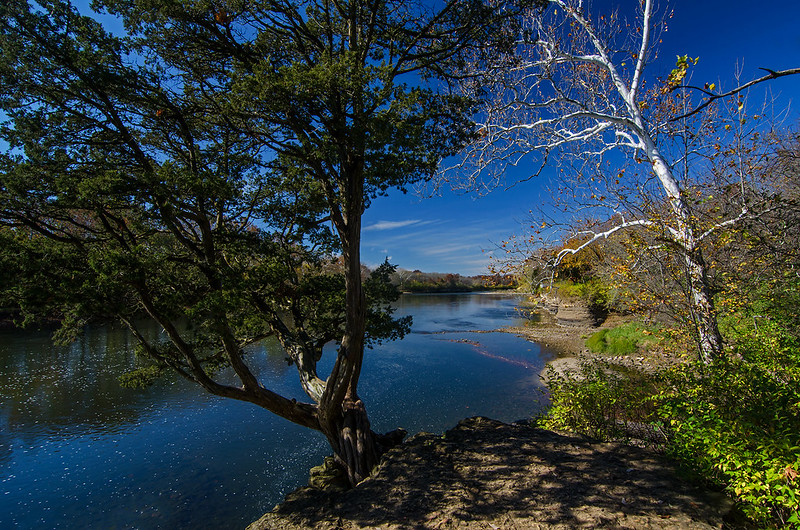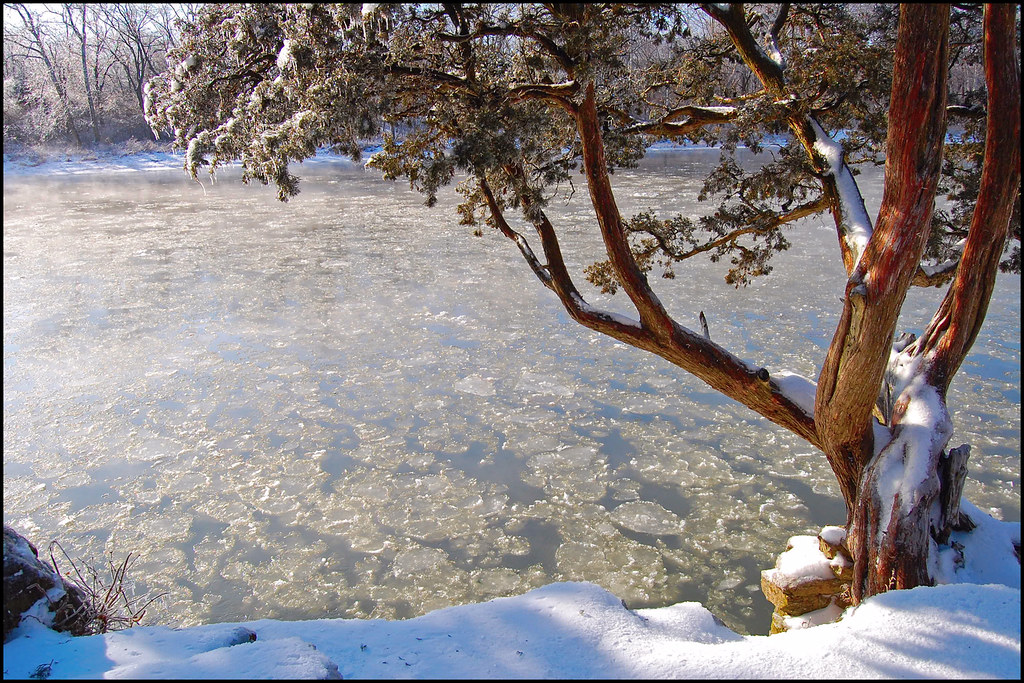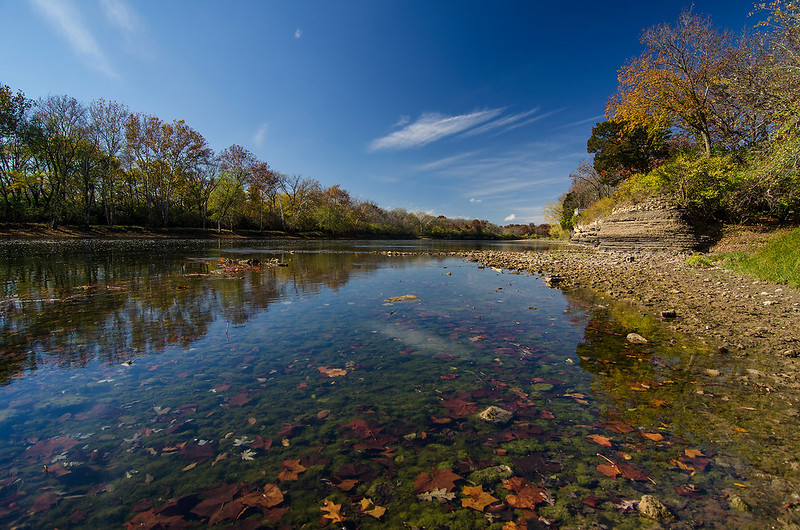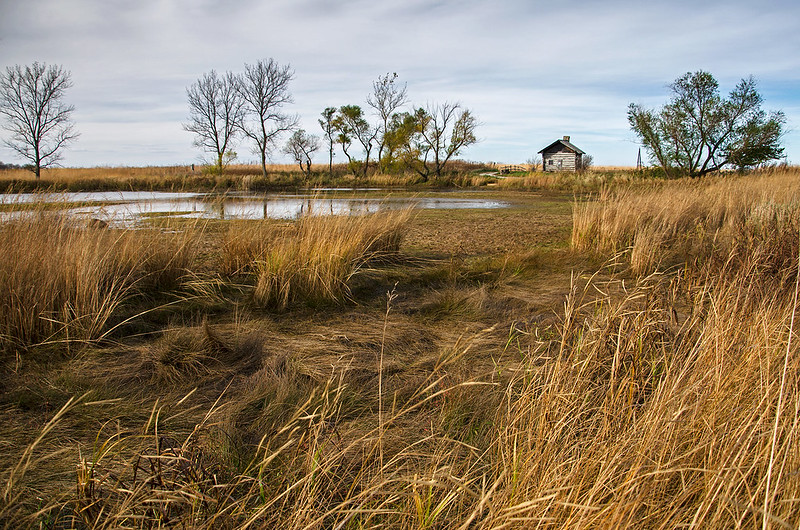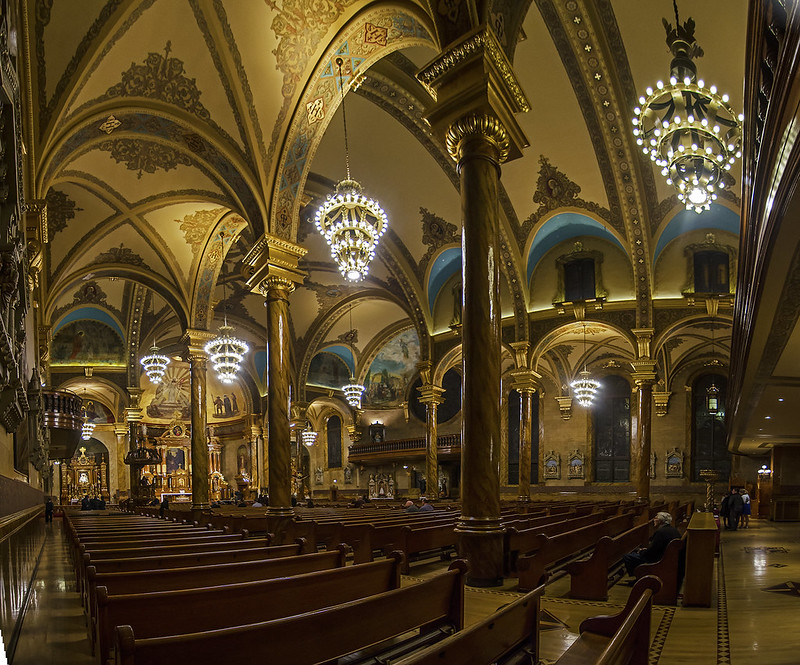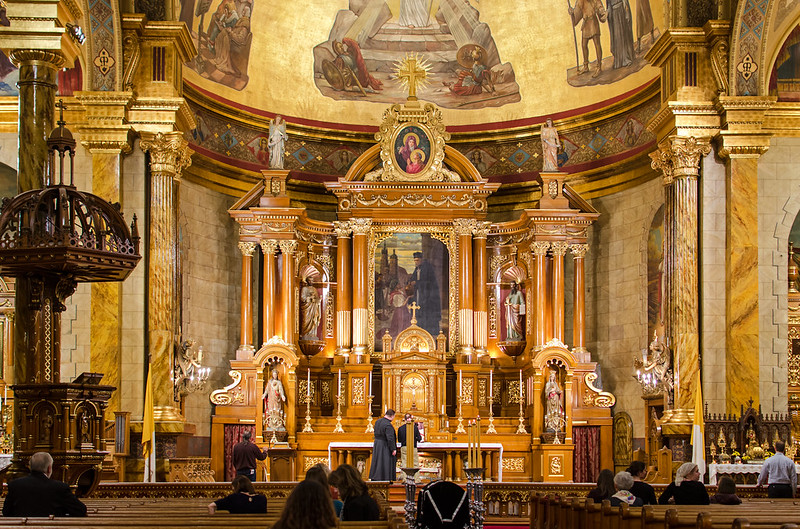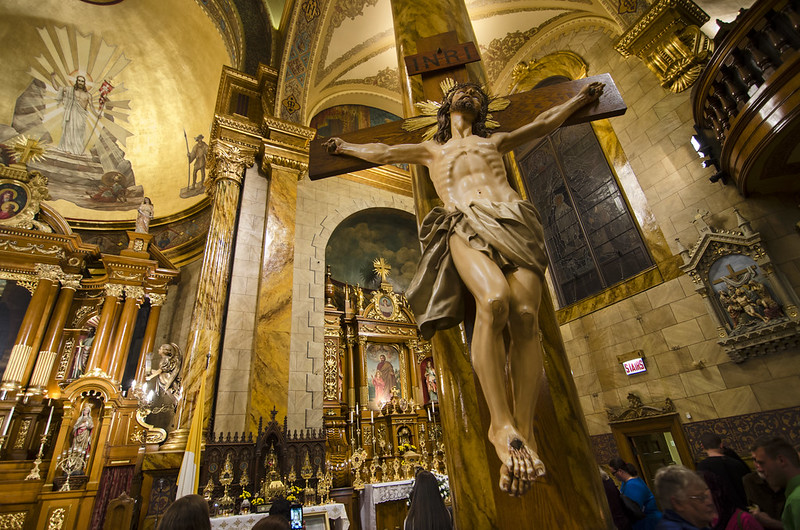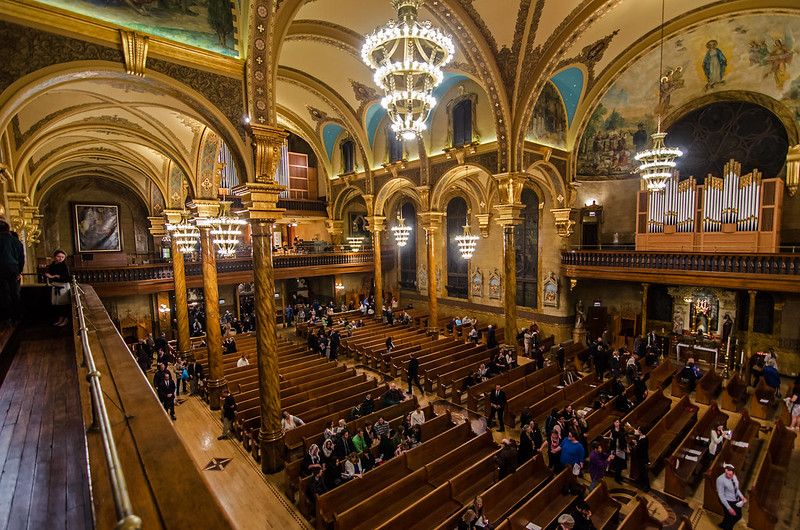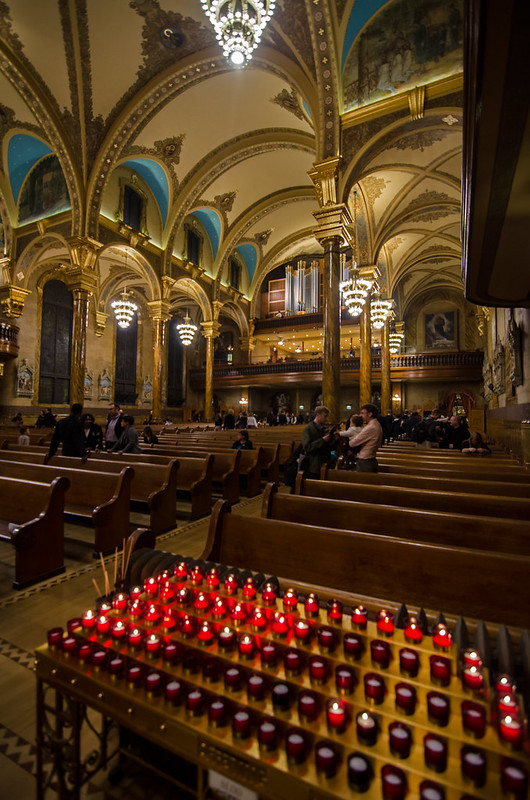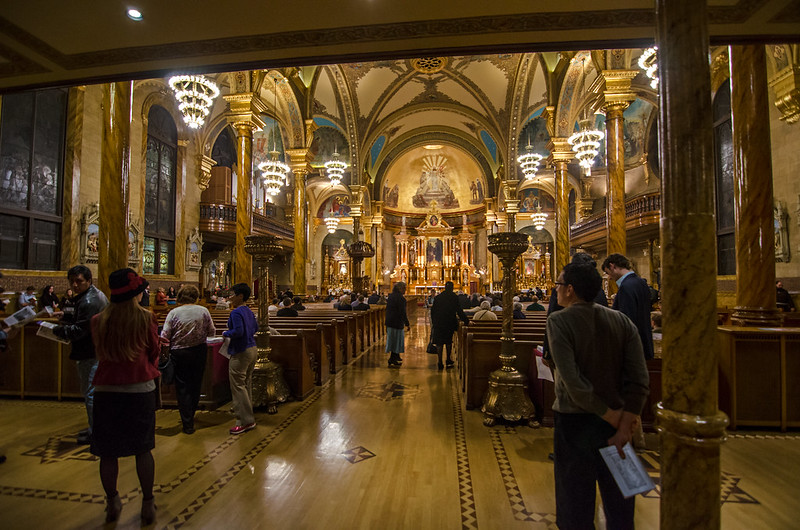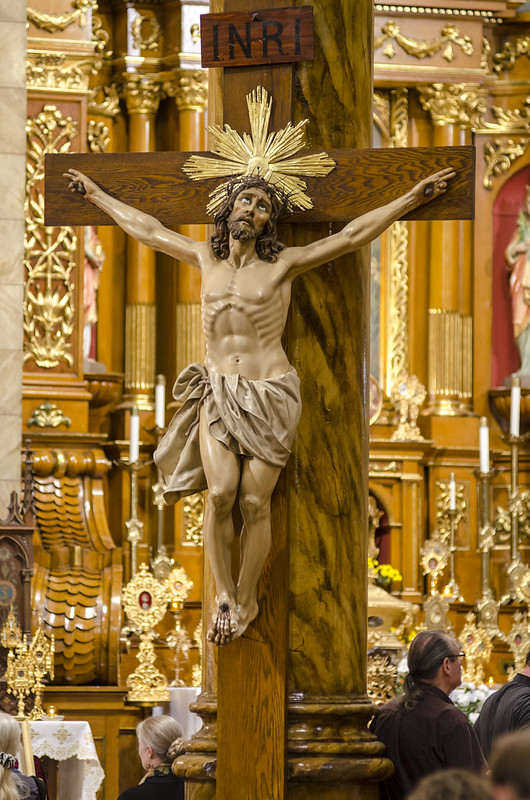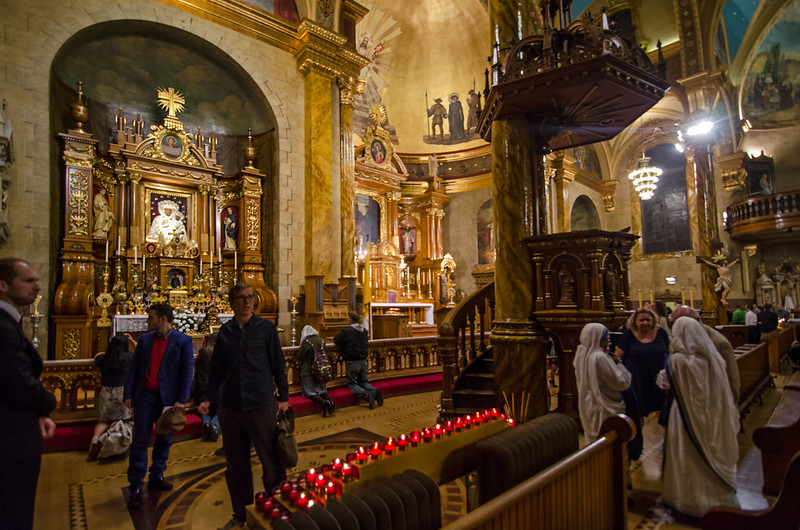
A relatively early snowfall in southwest Michigan arrived before Thanksgiving, reducing visibility considerably. Not a blizzard, yet heavy snowfall at times, but the accumulation wasn't as much as expected.
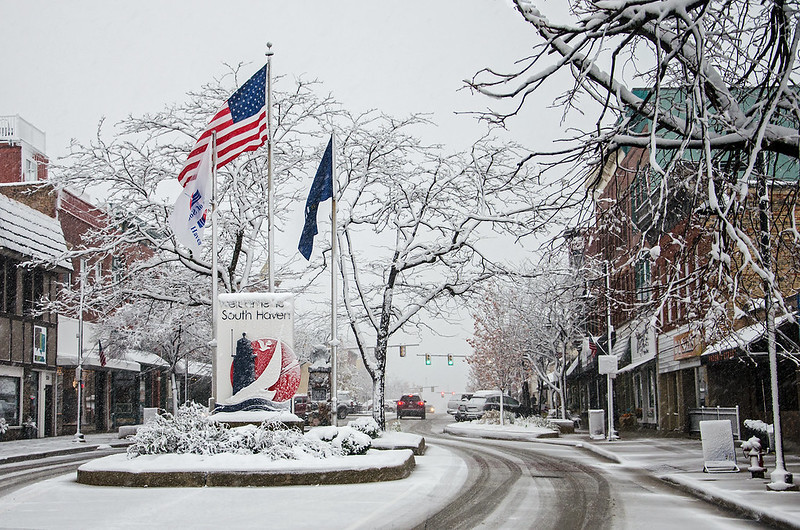
Still, the snow managed to convert the town of South Haven into a winter postcard. The weather seemed to keep most shoppers away from the downtown area, as the streets seemed empty.
Winds were absent, making the walk through the snowy downtown streets enjoyable, and a future look into the fast approaching Christmas shopping season.
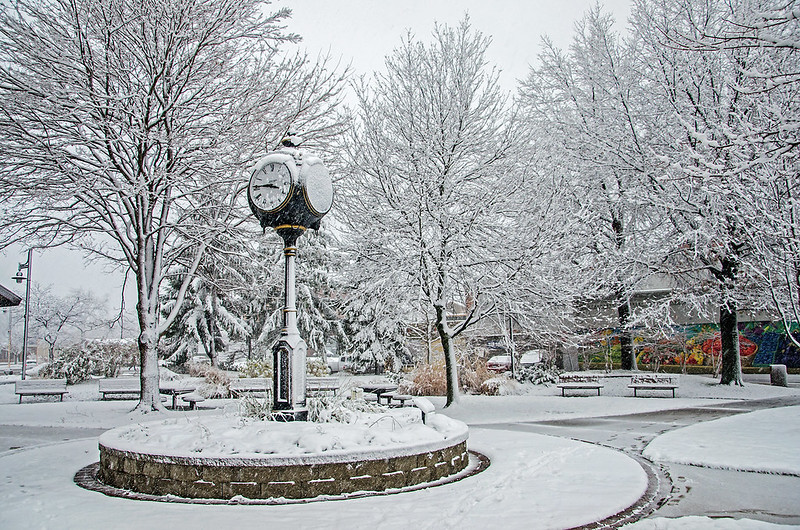
Surprisingly, not too many visitors bothered to walk on the beach or near the lighthouse. In the past two years, bad weather attracted spectators to the lighthouses of the Great Lakes, but for now, people remained in their warm homes.
